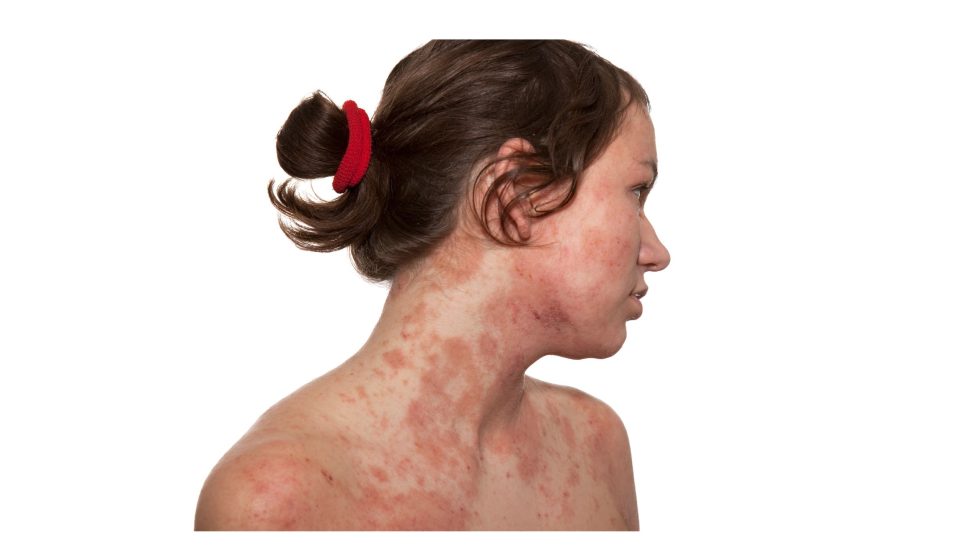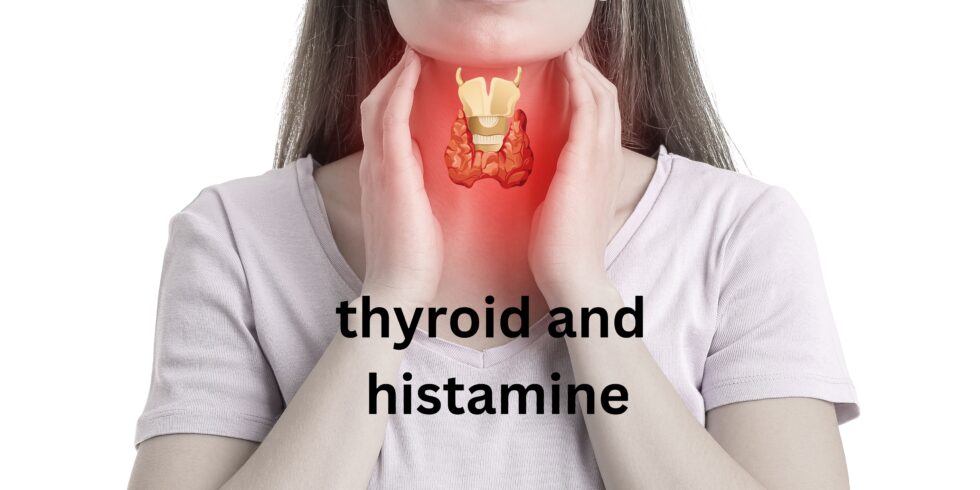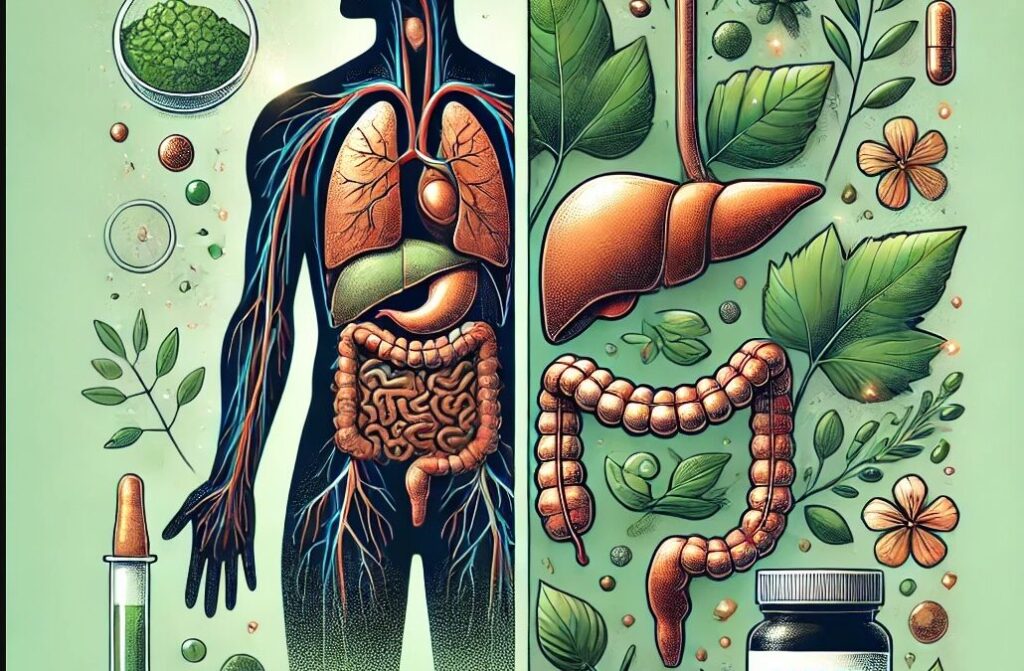Are you struggling with inflammatory skin conditions like atopic dermatitis? This blog is for you! We’re diving deep into the remarkable relationship between your skin microbiome and gut health.
Discover how the balance of your gut and skin microbiome can be a game-changer in managing conditions like atopic dermatitis.
Your microbiome
The skin microbiome plays a significant role in a wide range of skin disorders. Not only does it influence the composition of the skin’s microbial community, but it’s also surprising that many skin diseases coincide with changes in the gut microbiome.
The microbiome acts as a critical regulator for the immune system, maintaining balance by communicating bidirectionally with tissues and organs.
Consequently, when there is dysbiosis in the skin or gut microbiome, it disrupts the immune response, increasing the likelihood of skin conditions such as atopic dermatitis, psoriasis, acne vulgaris, dandruff, and even skin cancer.
A deeper understanding of the local skin and gut microbiomes, including the underlying mechanisms, is essential to uncover the role of microbes in human skin diseases and to develop innovative therapeutic strategies.

How the skin and gut microbiome are interrelated
Both the skin and gut have microbiomes, which are communities of microorganisms living within them. These microbiomes play critical roles in maintaining health. Here are the similarities between the skin and gut microbiomes:
- Microbial Communities: Both the skin and gut host diverse microbial communities consisting of bacteria, fungi, and other microorganisms.
- Immune System Interaction: Microbes in both the skin and gut interact with the immune system, influencing immune responses to maintain overall health and defend against pathogens.
- Balance and Homeostasis: A balanced microbiome is crucial for both the skin and gut to function optimally. Imbalances, referred to as dysbiosis, can lead to various health issues in both systems.
- Communication: The skin and gut microbiomes communicate bidirectionally with the body’s tissues and organs, helping to regulate various physiological processes and maintain homeostasis.
- Impact on Health: Dysbiosis in either the skin or gut microbiome can lead to skin conditions like atopic dermatitis, psoriasis, and acne, as well as gut-related issues. The interconnectedness of these microbiomes suggests that maintaining their health is essential for overall well-being.
The skin and gut microbiomes share similarities in terms of their microbial communities, interactions with the immune system, the importance of balance, communication with the body, and their impact on health, underscoring their crucial roles in maintaining overall well-being.

How dysbiosis in the gut affects the skin microbiome
Dysbiosis in the Gut and Skin Health
Dysbiosis refers to an imbalance in the composition and function of the gut microbiome, the community of microorganisms residing in the gastrointestinal tract. When dysbiosis occurs, it can have far-reaching effects on overall health, including the health of the skin. The Gut-Skin Axis is a concept that highlights the interconnectedness of the gut and skin, suggesting that changes in gut microbiota can influence skin conditions.

Lifestyle Factors and the skin microbiome
Several lifestyle factors can contribute to gut dysbiosis, which in turn can negatively impact the skin:
- Diet: A diet high in processed foods, sugars, and saturated fats can alter the gut microbiome composition. These dietary choices can promote the growth of harmful bacteria while diminishing beneficial microbes, potentially leading to systemic inflammation and skin problems.
- Stress: Chronic stress can disrupt the gut-brain axis, affecting gut health. Stress-induced changes in gut microbiota can trigger skin conditions such as acne, eczema, or psoriasis.
- Antibiotic Use: Frequent or inappropriate use of antibiotics can disrupt the balance of gut bacteria, potentially leading to gut dysbiosis. This disruption can affect skin health by increasing the risk of skin infections or exacerbating existing skin conditions.
- Sleep Patterns: Irregular sleep patterns and chronic sleep deprivation can also impact the gut microbiome. Poor sleep can contribute to gut dysbiosis and potentially worsen skin conditions.
Nutrition and the skin microbiome
Nutrition plays a crucial role in maintaining a healthy gut microbiome, which, in turn, can influence skin health:
- Probiotics and Prebiotics: Probiotics are beneficial bacteria found in certain foods like yogurt and kefir, while prebiotics are dietary fibers that nourish these beneficial microbes. Consuming probiotic-rich foods and prebiotics can help support a balanced gut microbiome, potentially improving skin conditions.
- Omega-3 Fatty Acids: Omega-3 fatty acids found in fatty fish, flaxseeds, and walnuts have anti-inflammatory properties that can benefit both gut and skin health. Including these foods in your diet may help mitigate skin inflammation associated with gut dysbiosis.
- Hydration: Proper hydration is essential for maintaining skin health. Water helps flush toxins from the body and supports the gut’s natural processes, aiding in the maintenance of a healthy gut microbiome.
In summary, dysbiosis in the gut can negatively impact the skin by promoting inflammation, compromising the skin’s barrier function, and influencing various skin conditions. Lifestyle factors, including diet, stress, antibiotic use, and sleep, can contribute to gut dysbiosis, thereby affecting skin health. Nutrition, through choices that support a balanced gut microbiome, can play a pivotal role in maintaining healthy skin.
Lets’ dive into common skin conditions and the skin microbiome
Atopic Dermatitis (AD)
Atopic dermatitis, often referred to as eczema, is a chronic inflammatory skin condition characterized by itchy, red, and inflamed skin. It typically begins in childhood but can persist into adulthood. AD is associated with immune system dysregulation and genetic predisposition.

Characteristics of AD:
- AD is characterized by dry, itchy skin, and it often presents with patches of redness and inflammation.
- The condition can vary in severity, with occasional flare-ups.
- Itchiness can be intense and disruptive to daily life.
- Scratching can lead to skin damage and further inflammation.
Cytokines and Mutations in AD:
- AD involves an immune response with various cytokines, including interleukins (IL) like IL-4 and IL-13, which promote inflammation and affect skin barrier function.
- Genetic mutations, such as those in the filaggrin gene, are associated with an increased risk of developing AD. Filaggrin is essential for maintaining the skin barrier.
Microbiome and Dysbiosis in AD:
- Research indicates that individuals with AD often have a less diverse skin microbiome.
- Dysbiosis in the skin microbiome of AD patients can include an overabundance of certain harmful bacteria and a reduction in beneficial bacteria.
- This microbial imbalance can contribute to inflammation and worsen the symptoms of AD.
- Atopic dermatitis is characterized by a reduction in microbial diversity on the skin. This often includes a decrease in beneficial bacteria like Staphylococcus epidermidis and an increase in potentially harmful microbes.
- The imbalance in the skin microbiome can compromise the skin barrier and exacerbate AD symptoms like itching and inflammation.
- These microbiome patterns in psoriasis, rosacea, and atopic dermatitis highlight the significance of microbial dysbiosis in contributing to the development and progression of these skin conditions. Understanding these imbalances may pave the way for targeted interventions aimed at restoring a healthier skin microbiome and improving skin health in affected individuals.
Diet and AD:
- Diet plays a significant role in AD management.
- Short-chain fatty acids (SCFAs), produced by gut bacteria from dietary fiber, can help reduce inflammation and improve skin barrier function.
- Probiotics (beneficial bacteria) and prebiotics (fibers that nourish beneficial bacteria) can support a healthier gut microbiome, which may have a positive impact on AD symptoms.
- Some studies suggest that avoiding common allergens like dairy, eggs, and nuts may help reduce AD flare-ups, especially in individuals with food sensitivities.
In summary, atopic dermatitis is a chronic inflammatory skin condition characterized by itchy and inflamed skin. It involves immune system dysregulation, genetic mutations, and cytokine-driven inflammation. Dysbiosis in the skin microbiome can exacerbate AD, while diet choices, including SCFAs, probiotics, prebiotics, and allergen avoidance, may play a role in managing the condition and reducing symptoms.
Psoriasis

Psoriasis is a chronic autoimmune skin disorder that results in the rapid buildup of skin cells. It is characterized by the following:
Characteristics of Psoriasis:
- Psoriasis leads to the formation of thick, red, and often silvery scales on the skin.
- It is a chronic condition that can have periods of remission and flare-ups.
- It is associated with symptoms like itching, pain, and discomfort.
- Psoriasis commonly affects areas such as the elbows, knees, scalp, and lower back.
Cytokines and Mutations in Psoriasis:
- Psoriasis involves an overactive immune response, with certain cytokines, particularly tumor necrosis factor-alpha (TNF-alpha) and interleukins (IL-17 and IL-23), playing a key role in inflammation and skin cell overproduction.
- Genetic factors are also important, and specific mutations, like those in the HLA-C gene, are linked to a higher risk of psoriasis.
Microbiome and Dysbiosis in Psoriasis:
- Studies suggest that individuals with psoriasis may have an altered skin microbiome.
- Dysbiosis in the skin microbiome, with imbalances in bacterial communities, can contribute to inflammation and exacerbate psoriasis symptoms.
- Psoriasis is associated with an alteration in the skin microbiome, marked by an increase in abundance of bacteria like Streptococcus and Staphylococcus.
- These bacteria, such as Streptococcus pyogenes and Staphylococcus aureus, are often found in higher quantities on psoriatic skin lesions.
- Dysbiosis involving these species can contribute to skin inflammation and exacerbate psoriatic symptoms.
Diet and Psoriasis:
- Diet can play a role in managing psoriasis.
- Short-chain fatty acids (SCFAs) derived from gut bacteria can have anti-inflammatory effects and potentially improve psoriasis symptoms.
- Probiotics (beneficial bacteria) and prebiotics (fibers that support beneficial bacteria) may positively influence the gut microbiome, potentially benefiting psoriasis management.
In summary, psoriasis is a chronic autoimmune skin condition characterized by the rapid growth of skin cells, leading to thick, scaly patches. It involves an immune response driven by cytokines, genetic factors, and alterations in the skin microbiome. Diet, including the consumption of SCFAs, probiotics, and prebiotics, may play a role in managing psoriasis and alleviating symptoms.
Rosacea

Rosacea is a chronic skin condition that primarily affects the face, characterized by persistent redness, visible blood vessels, and often pimples or pustules. It can be triggered or exacerbated by various factors, including certain foods, environmental factors, and alcohol consumption.
Characteristics of Rosacea:
- Rosacea typically presents with persistent facial redness, often resembling a blush or sunburn.
- Other symptoms may include visible blood vessels (telangiectasia), bumps, pimples, and occasionally eye irritation (ocular rosacea).
- It can be divided into subtypes, with symptoms ranging from mild to severe.
Cytokines and Mutations in Rosacea:
- While the exact cause of rosacea remains unclear, inflammatory cytokines like tumor necrosis factor-alpha (TNF-alpha), interleukin-1 (IL-1), and vascular endothelial growth factor (VEGF) are believed to play a role in its development and progression.
- Genetic factors and mutations may contribute to an individual’s susceptibility to rosacea, but specific genes involved are not yet well-defined.
Microbiome and Dysbiosis in Rosacea:
- Recent research suggests that alterations in the skin microbiome may be associated with rosacea.
- A low-diversity skin microbiome, with a reduced variety of microorganisms, and dysbiosis (microbial imbalance) are factors that may contribute to the development or worsening of rosacea.
- Dysbiosis could lead to inflammation and contribute to skin symptoms.
- Rosacea exhibits a unique microbiome pattern, with an increased presence of Demodex mites, microscopic arachnids, on the skin.
- Certain bacteria, including Bacillus oleronius, are also associated with rosacea.
- The interplay between these microbes and skin inflammation contributes to the development of rosacea symptoms.
Diet and Rosacea:
- Diet can influence rosacea symptoms, and triggers vary among individuals.
- Some common dietary triggers for rosacea may include spicy foods, alcohol, hot beverages, and foods that are high in histamines.
- Incorporating foods rich in anti-inflammatory compounds, such as short-chain fatty acids (SCFAs), may help alleviate symptoms in some individuals.
- Probiotics and prebiotics may support a balanced gut microbiome, which can indirectly influence skin health, including rosacea.
In summary, rosacea is a chronic skin condition characterized by facial redness, visible blood vessels, and sometimes pimples. Inflammatory cytokines are thought to play a role, and while genetic factors may contribute, specific genes involved are not yet well-defined. Dysbiosis in the skin microbiome and diet triggers can exacerbate rosacea symptoms. Diet modifications, including SCFAs, probiotics, and prebiotics, may offer relief to some individuals with rosacea, but individual triggers can vary.
The role of the histamine H4 receptor in atopic dermatitis and psoriasis
Histamine H4 Receptor and Skin Conditions
The histamine H4 receptor’s implication in the development and progression of atopic dermatitis (AD) and psoriasis, both inflammatory skin disorders, is a topic of increasing interest in dermatology and immunology research. Here’s an expanded explanation of its involvement in these conditions:
1. Atopic Dermatitis (AD): Atopic dermatitis, commonly known as eczema, is characterized by chronic inflammation and skin barrier dysfunction. The histamine H4 receptor plays several roles in the development and progression of AD:
- Inflammatory Responses: The H4 receptor is expressed on various immune cells, such as mast cells, dendritic cells, and T cells. When activated by histamine, it can trigger pro-inflammatory responses, leading to skin inflammation and exacerbating AD symptoms like redness and swelling.
- Itching (Pruritus): Itchiness is a hallmark of AD, and histamine, acting on H4 receptors, is a potent pruritic agent. This receptor’s activation can intensify itching sensations in AD patients, leading to excessive scratching, which further damages the skin barrier.
- Immune Cell Recruitment: H4 receptor activation can facilitate the recruitment of immune cells to the skin, which contributes to the inflammatory cascade in AD. This leads to the release of inflammatory cytokines like IL-4, IL-13, and IL-31, further promoting inflammation and itching.
- Skin Barrier Dysfunction: AD is associated with a compromised skin barrier. Histamine H4 receptor activation can impair the skin barrier function by disrupting the tight junctions between skin cells, allowing allergens and irritants to penetrate the skin more easily.
2. Psoriasis: Psoriasis is characterized by the rapid proliferation of skin cells, leading to thickened, scaly patches and inflammation. The histamine H4 receptor’s involvement in psoriasis includes:
- Inflammatory Signaling: The H4 receptor is expressed on various immune cells involved in psoriasis, such as T cells, dendritic cells, and macrophages. Activation of these receptors can trigger pro-inflammatory signaling pathways, contributing to the chronic inflammation seen in psoriasis lesions.
- Angiogenesis: Psoriasis is associated with abnormal blood vessel formation (angiogenesis) in the skin. H4 receptor activation can promote angiogenesis, which may contribute to the development of the characteristic redness and swelling seen in psoriatic lesions.
- Immune Cell Infiltration: H4 receptor activation can attract immune cells to psoriatic skin lesions, intensifying the local immune response and exacerbating skin inflammation.
- Th17 Cell Differentiation: H4 receptor activation can influence the differentiation of T cells into Th17 cells, which are known to be involved in the pathogenesis of psoriasis. This can further promote inflammation and skin cell proliferation.
Understanding the role of histamine H4 receptors in these inflammatory skin disorders has led to investigations into H4 receptor antagonists as potential therapeutic agents. By targeting H4 receptors, researchers aim to modulate the immune responses, reduce inflammation, and alleviate symptoms in both atopic dermatitis and psoriasis patients. This research offers promising avenues for the development of novel treatments for these challenging skin conditions.
The Low Histamine Diet
A low histamine diet has gained attention for its potential to alleviate symptoms of various skin conditions, including atopic dermatitis, psoriasis, and rosacea. Histamine is a natural compound involved in immune responses and inflammatory processes. However, excessive histamine levels or reduced histamine breakdown can contribute to skin inflammation and worsen symptoms in individuals with these skin conditions.
For Atopic Dermatitis (AD): In atopic dermatitis, where skin barrier dysfunction and inflammation are prominent, a low histamine diet can be particularly beneficial. Histamine can trigger itching and exacerbate skin inflammation. By reducing histamine-rich foods such as aged cheeses, fermented products, and certain processed foods, individuals with AD may experience relief from itching and a reduction in skin inflammation. Additionally, a low histamine diet may complement conventional AD treatments by addressing an underlying trigger, improving the overall quality of life for those dealing with this chronic skin condition.
For Psoriasis: Psoriasis is characterized by the rapid growth of skin cells and chronic inflammation. Histamine’s role in promoting inflammation can make it a significant factor in psoriatic flare-ups. A low histamine diet, which restricts high-histamine foods and histamine-releasing foods, may help mitigate inflammation and alleviate skin symptoms. Individuals with psoriasis can consider avoiding foods like alcohol, processed meats, and certain canned or aged products. Incorporating anti-inflammatory, low-histamine foods, such as fresh fruits, vegetables, and lean proteins, may support better management of psoriasis and reduce the frequency and severity of flare-ups.
For Rosacea: Rosacea is characterized by facial redness and inflammation, often triggered or worsened by histamine-rich foods and beverages. Individuals with rosacea may benefit from a low histamine diet by avoiding common triggers like spicy foods, alcohol, and certain aged cheeses. Reducing histamine intake can help prevent vasodilation (widening of blood vessels) and minimize skin redness and flushing associated with rosacea. While not a one-size-fits-all solution, adopting a low histamine diet may play a significant role in managing rosacea symptoms, especially for those sensitive to histamine-rich foods.
In summary, a low histamine diet offers a potential dietary approach to help manage atopic dermatitis, psoriasis, and rosacea by reducing inflammation, alleviating itching, and minimizing skin redness and flare-ups. It is important to note that individual responses to dietary changes may vary, and consulting a healthcare professional or dermatologist for personalized dietary recommendations is advisable for those with these skin conditions.
References
Chung BY, Cho SI, Ahn IS, Lee HB, Kim HO, Park CW, Lee CH. Treatment of Atopic Dermatitis with a Low-histamine Diet. Ann Dermatol. 2011 Sep;23 Suppl 1(Suppl 1):S91-5. doi: 10.5021/ad.2011.23.S1.S91. Epub 2011 Sep 30. PMID: 22028584; PMCID: PMC3199434.
De Pessemier B, Grine L, Debaere M, Maes A, Paetzold B, Callewaert C. Gut-Skin Axis: Current Knowledge of the Interrelationship between Microbial Dysbiosis and Skin Conditions. Microorganisms. 2021 Feb 11;9(2):353. doi: 10.3390/microorganisms9020353. PMID: 33670115; PMCID: PMC7916842
Schaper-Gerhardt K, Rossbach K, Nikolouli E, Werfel T, Gutzmer R, Mommert S. The role of the histamine H4 receptor in atopic dermatitis and psoriasis. Br J Pharmacol. 2020 Feb;177(3):490-502. doi: 10.1111/bph.14550. Epub 2019 Jan 2. PMID: 30460986; PMCID: PMC7012951.




